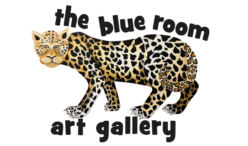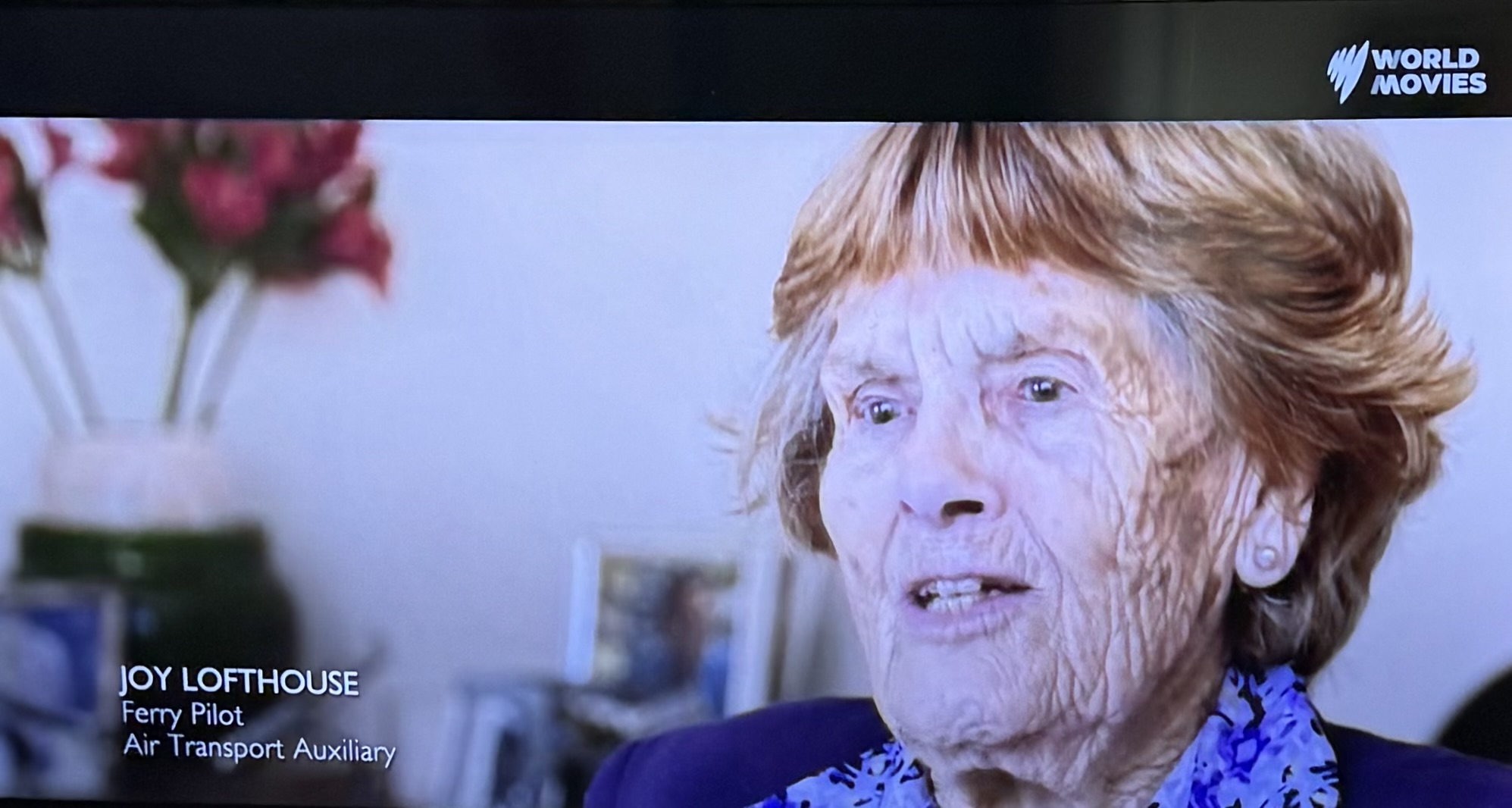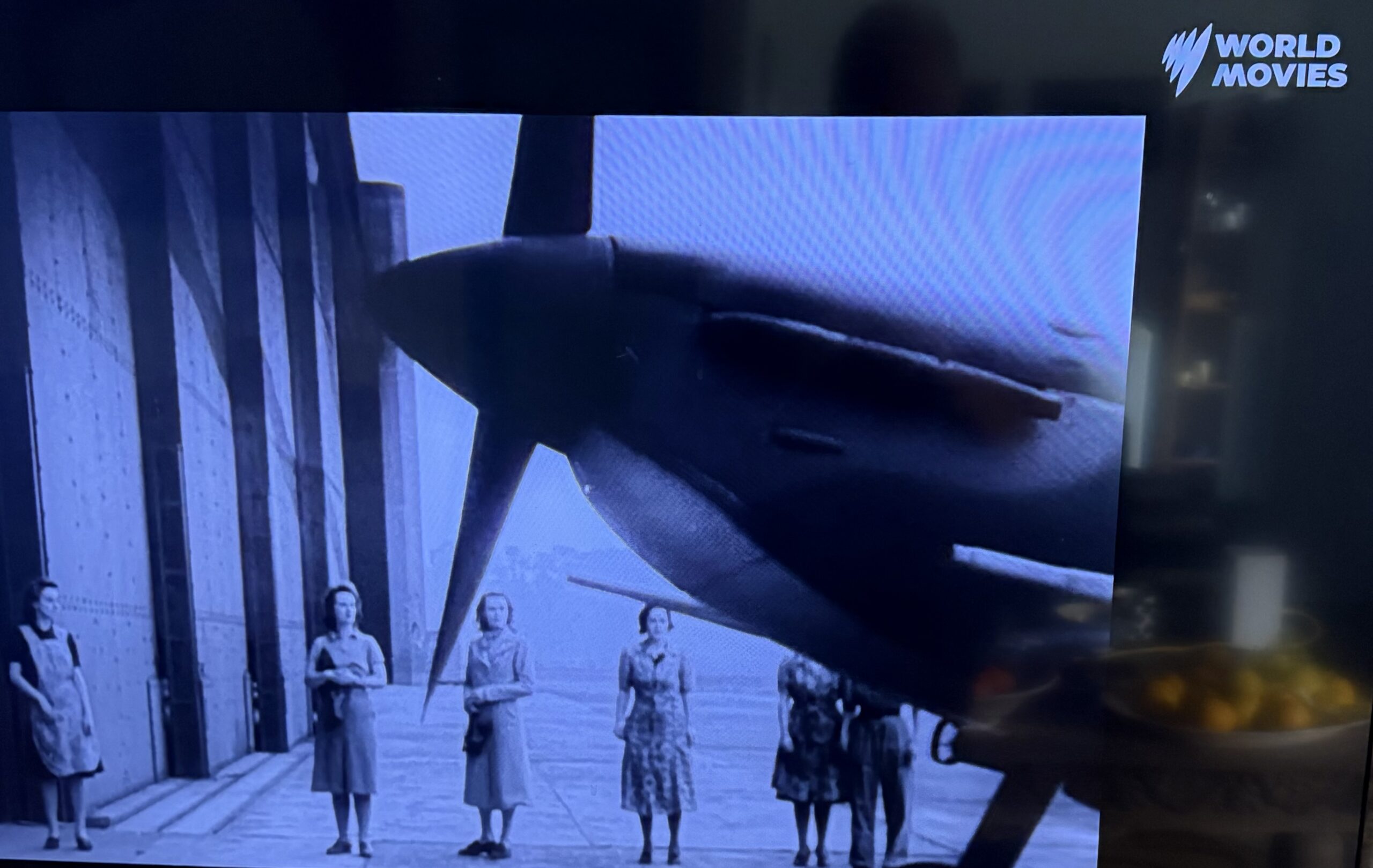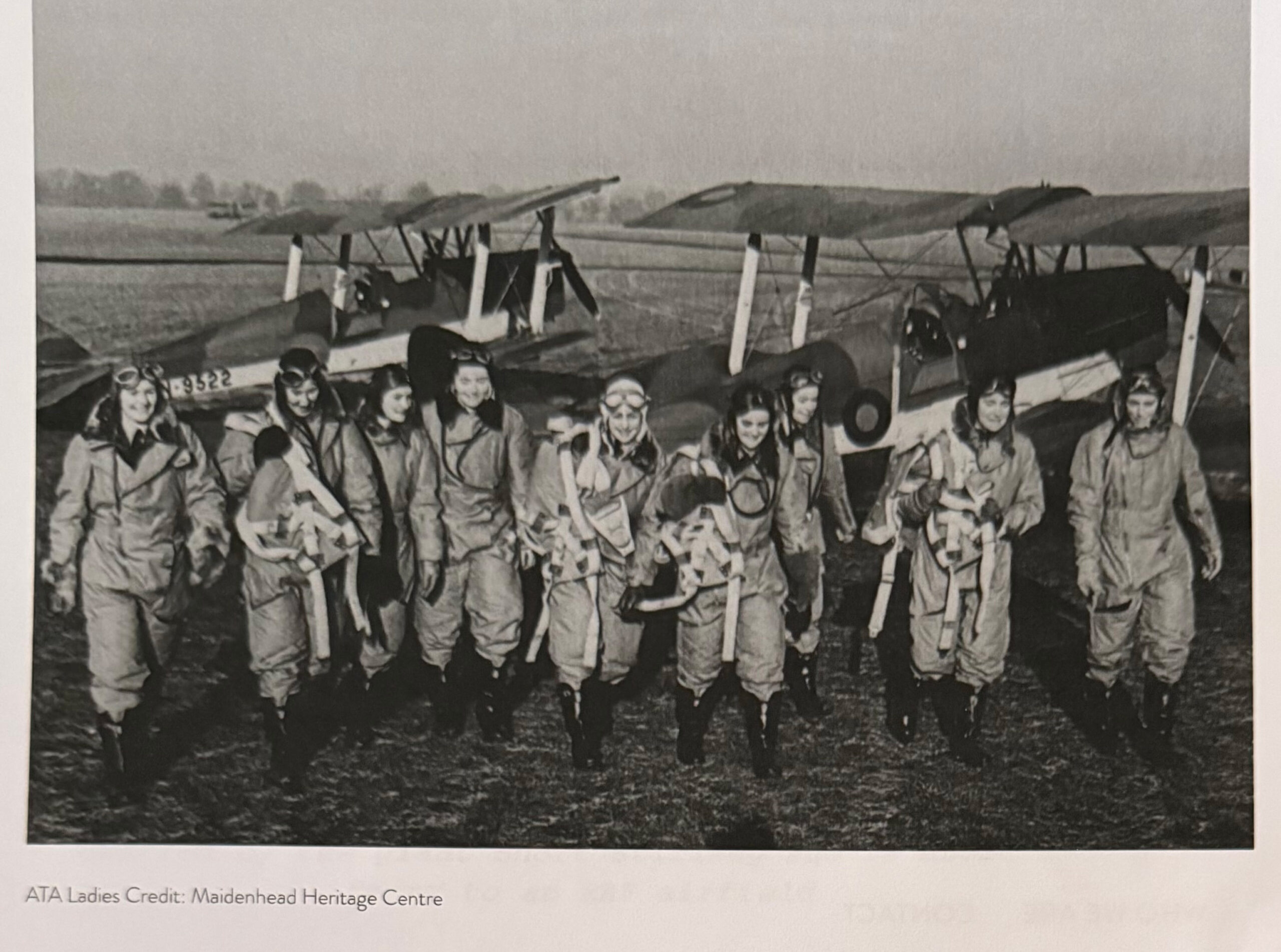FILM SYNOPSIS
THE FIRST EIGHT
Australian writer Anne Rittman is the author of the film series, ‘The First Eight’a drama based on fact.
She is also the author of ‘Spitfire, the plane that crushed Hitler’s dreams!’ & coauthor of ‘Bohemian Brunswick Street’, a tome (648 pages)
Best choice of actors:
Gillian Anderson to play Pauline Gower, a giant among women in WW2, causing a breakthrough in women’s participation as pilots in the ATA.
Colin Firth to play the Spitfire pilot who guided Lettuce to safety in a thick fog using hand signals only. The methodology of delivering these planes was called ‘contact’ flying.
‘The First Eight’ gives us multiple insights into the extraordinary achievements of the women who flew the planes of all kinds, from the factories to the RAF bases, where they were put into immediate service in the war against Hitler. We watch the attitude of the air force and the public transform from one of barely concealed scorn to admiration and love for these courageous women.The women of the ATA.
‘The First Eight’ is a synopsis for a 4-part series, based on the courageous exploits of the first female pilots to join the ATA in Britain in WW2. The ATA ferried planes from factories to the RAF bases where they were needed. Initially the women, all experienced pilots, were reviled by the British public and members of the Airforce who called them ‘disgusting’ and ‘lacking in intelligence’ among other things. It wasn’t until the women’s usefulness and skill became sorely needed, due to Hitler’s onslaught, that the public and official attitude to these brave women, transformed to one of admiration and pride.
EPISODE ONE
‘Breakthrough’
When it was first suggested that women should be recruited and trained for the ATA, an aviation magazine harshly asserted, ‘The menace is the woman who thinks she ought to be flying a high-speed bomber when she has not the intelligence to scrub the floor of a hospital properly.’
This film highlights the transformation of the public’s revulsion towards the women of the ATA to one of pride and love. It shows the acceleration of inventions and attitudes needed to deal with rapidly changing circumstances, as Hitler launches a massive air offensive on Britain.
In 1939 Hitler invaded Poland and Britain declared war on Germany. On May 10th 1940 Winston Churchill became Prime minister of Britain.
In December1939 Pauline Gower is appointed to head the women’s section of the Air Transport Auxiliary (ATA), and the first 8 women pilots, including herself, are accepted into service in January 1st1940. Initially they are cleared only to fly Tiger Moths from their base in Hatfield. At first the women were paid at a much lower rate than the men. Pauline intervened and eventually the women were paid on a parity with men.
Born on July 22nd, 1910, in Tunbridge Wells, Kent, England, Gower came from a prominent family; her father Sir Robert Gower, a politician and member of parliament. Gower’s interest in aviation began at a young age, and she earned her pilot’s licence in 1930. She went on to establish a successful air taxi business with a fellow pilot Dorothy Spicer and the two women became lovers.
Initially when Pauline Gower applied to join the ATA, she faced several challenges. The initial rejection was due to concerns about women flying military aircraft and their lack of experience. Although Pauline was an experienced pilot, the ATA required pilots to have a minimum of 250 hours of flying experience. The ATA also held a strong gender bias against women being accepted into the ATA as pilots. This was the prevailing prejudice of the times.
When the idea of women flying planes for the ATA was first proposed, the press reaction was largely sceptical and even mocking. The ‘Daily Mail’ described the idea as ‘preposterous’ and questioned the ability of women to handle complex aircraft. ‘The Times’ expressed doubts about the ‘physical and mental’ fitness of women for flying duties. Other newspapers mocked the idea with headlines like, ‘Women to Fly Planes? Oh Dear!’ and ‘The ATA’s Feminine Fliers – A Joke?’
These reactions held that women were not capable of performing tasks that required technical skill, physical strength, or mental toughness. Lord Beaverbrook, the Minister for Aircraft Production, was reported to have referred to the idea of women flying aircraft as ‘disgusting’.
Pauline Gower’s father, Sir Robert Gower, played a significant role in gaining her entry to the ATA. As a member of Parliament, he used his influence to help his daughter’s application. Specifically, he approached his friend, Lord Beaverbrook, to advocate for Pauline’s acceptance into the ATA. This paved the way for her acceptance.
Societal attitudes towards same-sex relationships in the 1930s and 1940s were largely negative. Homosexuality was considered a taboo and was often viewed as immoral, unnatural and even a mental illness.
In the UK homosexual acts between men were illegal until 1967, and lesbianism was not explicitly mentioned in the law, but was still socially stigmatised. People in same-sex relationships often faced persecution, ridicule, and rejection by family, friends, and society at large. Despite this, some women, like those in the ATA, were able to find a sense of freedom and acceptance within certain communities, such as the women’s aviation community, where they could pursue their passions and live more openly.
Despite her achievements and contributions to the war effort, Pauline faced discrimination due to her sexuality. However, her social status and family connections helped mitigate some of the negative impacts. (Later on, her marriage to Wing Commander Bill Thorton was seen to conceal her true sexuality and avoid social repercussions.)
Lesbianism in the ATA accounted for resistance to women joining, especially in the early years. Some people viewed the ATA as a haven for ‘unconventional’ women, and the rumours of lesbian relationships within the organisation fuelled sexist and homophobic attitudes. This led to some opposition to women joining the ATA, questioning their suitability to the role and their moral character.
In 1935 Hitler, as the leader of the Nazi party, was consolidating his power and implementing policies to establish a totalitarian regime. ie Hitler remilitarized the Rhineland, beginning Germany’s expansion. he introduced the Nuremberg rules, a set of anti-Semitic laws which stripped Jews of their citizenship and prohibited sexual relations or marriage between Jews and non-Jews. Other steps included the establishment of the Gestapo and the arrest and imprisonment of political opponents.
Meanwhile in England (1936) preparations for war were taking place behind the scenes. Herbert Austin proposed a scheme to the British government to build factories for aircraft production to secret locations around the country. It was called the Shadow Factory Scheme. These factories were built alongside car manufacturing factories which acted as a cover (in the shadows!) and provided already existing technical knowledge used for building cars. The Merlin engine built for the Spitfire and Hurricane by Rolls-Royce were manufactured in these factories.
In 1936 Hitler began laying the groundwork for Germany’s expansion and war. At this point, behind the scenes Britain building shadow factories to manufacture munitions and aircraft.
In the first episode of ‘The First Eight’ we are introduced to Pauline, her lover Dorothy Spicer and the women of ‘The First Eight’. The pilots in lesbian relationships meet socially at ‘Gateways’, a club for women, where the women could relax and be themselves. Other women of the ATA in same-sex relationships were Winifred Crossley & Margaret Fairweather, Lettuce Curtis & Margaret (Peg) Cuthbert.
EPISODE TWO
‘Unconventional Women’
The intensity of the war increases so decisions are made quickly to deal with the onslaught of Hitler’s attack on Britain. What was unthinkable now becomes what’s required.
‘The First Eight’ women are accepted into the ATA on January 1st 1940. We meet the eight women who are excited at the prospect of representing the first women to be admitted into the ATA.
They are, Joan Hughes, Margaret Cunnison, Mona Friedlander, Rosemary Rees, Marion Wilberforce, Margaret Fairweather, Gabrielle Patterson and Winifred Crossley Fair. We are introduced to their intimate relationships and the clandestine nature of their social lives.
The Battle of Britain takes place 10th July 1940 – 31st October 1940. It was the successful defence of Great Britain against the attack by the German Air Force.
This main offensive was called Alderangriff (Eagle Attack) by Hitler. Sir Hugh Dowding is Commander of the British forces. The British were greatly outnumbered with available aircraft; however, they are victorious.
This shortage now becomes the pressing justification to accept woman as pilots into the ATA. A shift in attitude towards women and their roles takes place.
Sidney Cotton approaches Hugh Dowding with a request for 2 Spitfires. Sidney saw the Spitfire as the ideal plane to modify for use as photo reconnaissance aircraft to collect vital information of enemy installations and Hitler’s movements.
The planes arrive the following day.
Beatrice Shilling, an aeronautical engineer, designs a device which stopped the carburettors flooding in Spitfires and Hawker Hurricanes when the plane’s nosedive during battle. The device is affectionately known as ‘Tilly’s Orifice’.
A national strike takes place with the advent of Agnes McLean, a crane driver from Glasgow. Rolls-Royce have refused to pay the women equal pay. They take strike action around the country.
As the war continues the mood of the country is urgent. Events take place quickly. Women emerge in leadership roles and are accepted as such. Women claim their right to equal pay and win. The strike over Rolls-Royce’s refusal to pay equal wages to the women in the factories, lasts for over a month and is a hot topic at Whitechapel where the pilots rest.
EPISODE THREE
‘Flying Blind’
We are introduced to the world of the ATA. The daily deliveries of different planes to their destinations. The incredible skill and courage required. (309,000 deliveries are made, 147 different planes are flown to their destinations amounting to 415,000 hours of flying)
We are also introduced to the social life of the pilots. The favourite spot to unwind was the White Hart Hotel in Maidenhead.
We are introduced to the concept of ‘contact’ flying. It was flying without instruments within sight of the ground to find the way and land safely.
Lettice Curtis delivered a plane in thick fog with the guidance of an RAF pilot who flew alongside her. On January 13, 1944, Lettice was ferrying a bomber from a factory to a RAF base. As she approached her destination a thick fog rolled in reducing the visibility to zero. With the help of this pilot providing precise instructions by hand she landed safely.
This incident is an illustration of the bravery and determination of these women and the incredible comradery and respect between the pilots. It’s also where the love and comradery the women had for each other shows up. Their great pride in Lettuce’s accomplishment is palpable. It demonstrates what challenges the women are liable to face each day.
The mood of this episode is high drama and pride as a victory over terrible circumstances is achieved.
EPISODE FOUR
‘Bitter Sweet’
The Poster Girl for the ATA, Maureen Dunlop, spells the dramatic shift in the way the women of the ATA are viewed by the public. Maureen was born on the 26th of October in 1920 in Argentina to British parents. She began flying at a young age, earning her pilot’s licence in her teens. In 1942 she joined the ATA and developed a reputation for fearlessness and flying ability. She flew a range of aircraft from the Spitfire to the Wellington Bomber and was known to handle these planes with precision and grace. One of the most iconic photos of an Attagirl was captured when Maureen stepped out of a Spitfire, looking confident with her hair blowing in the wind – an image which captured the public’s imagination and symbolised the glamour and heroism of the ATA.
The death of Amy Johnson.
‘A hero mourned’
Amy disappeared on January 5th 1941. She took off from Prestwick and encountered adverse weather conditions. It is believed she ran out of fuel and parachuted from her plane into the Thames. A convoy of wartime vessels spotted her parachute descending into the water. Lieutenant Commander Walter Fletcher attempted to rescue her, but the crew couldn’t reach her, and she was lost under the boat. Theories about her death range from her being sucked into the propellors of the ship or hypothermia.
Her body was never found. Some claim she was shot down by friendly fire as she may have been unable to provide a correct identification code under the terrible circumstances.
Amy’s greatest achievement was being the first woman to fly solo from London to Australia in 1930. The distance was 11,000 kilometres and took 19 days to complete. She flew a de Havilland Gypsy Moth aircraft called Jason. Amy broke records do in this and paved the way for women pilots.
The reaction to Amys death was one of shock and sadness.
Newspapers reported on Amy Johnson’s disappearance and presumed death on January 5th, 1941, with shock and sadness. The news of her death was met with tributes to her pioneering achievements in aviation were widely reported. A memorial service was held for her at St Martin-in-the Fields church, January 14th 1941.
The women of the ATA privately celebrated the achievements of Amy, with both pride and sadness. She represented the best in all of them.





